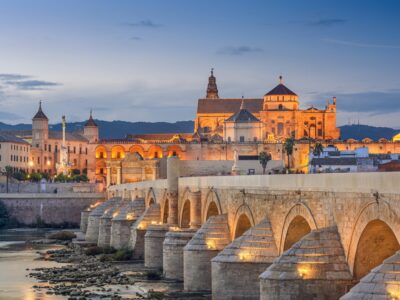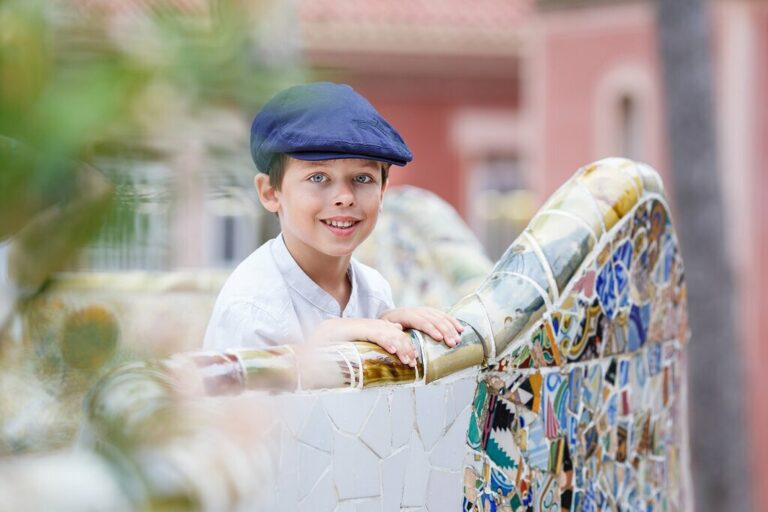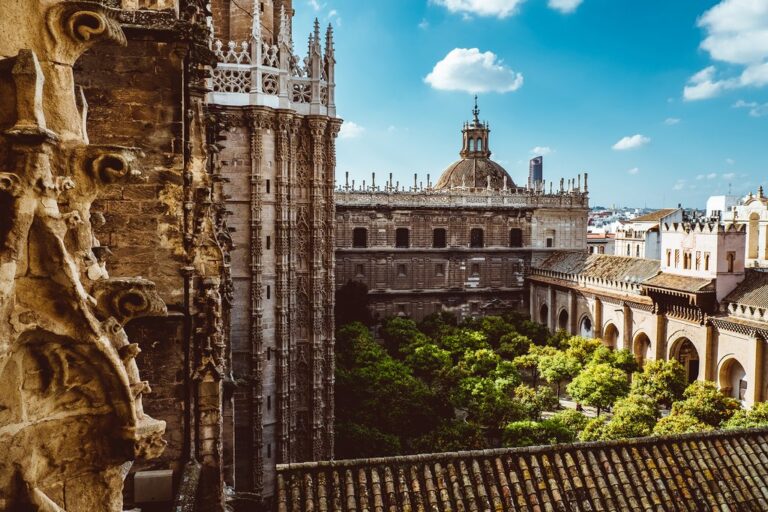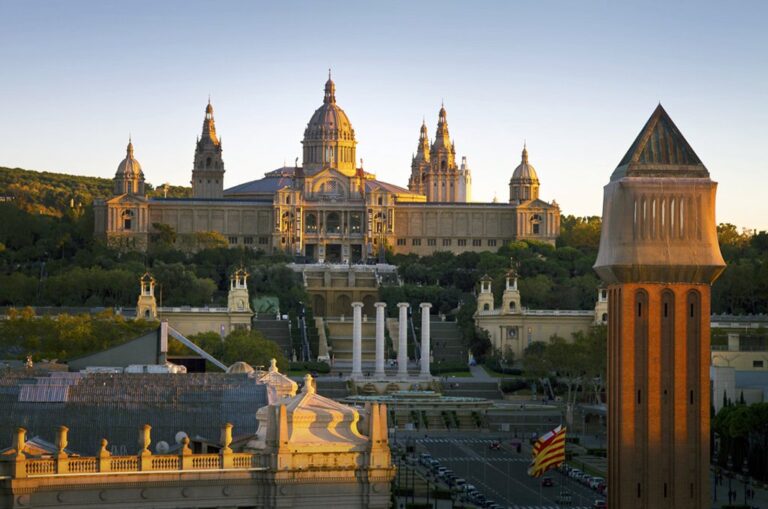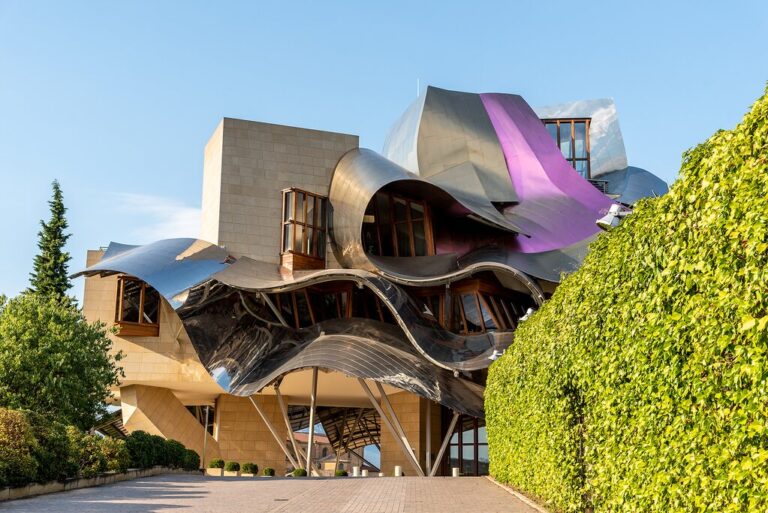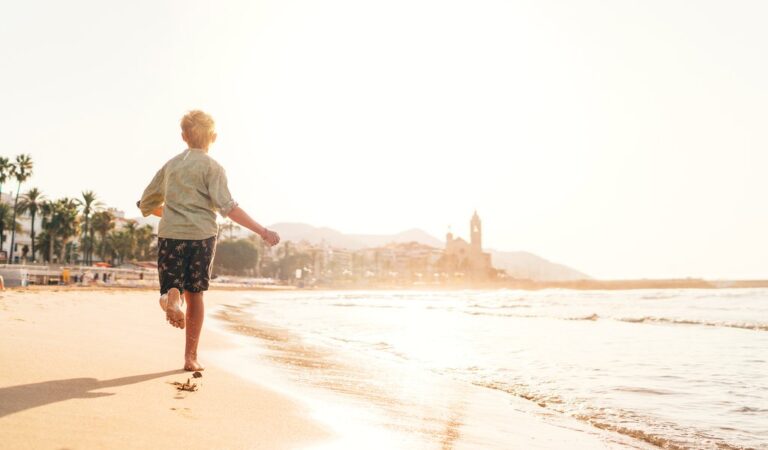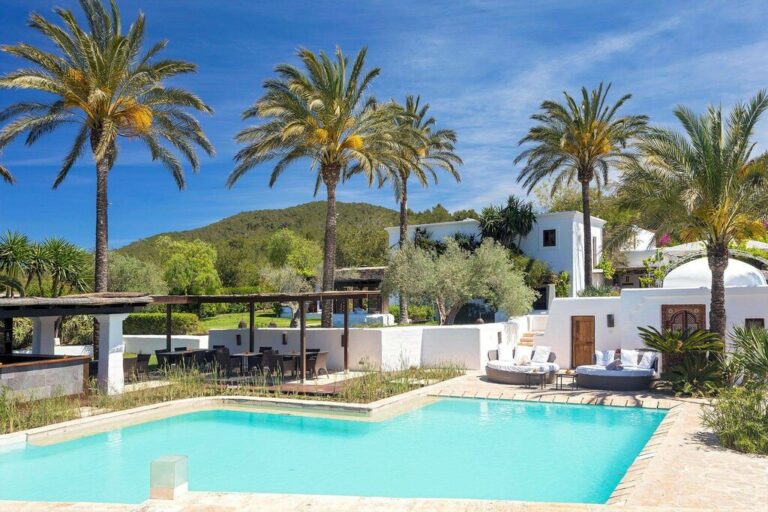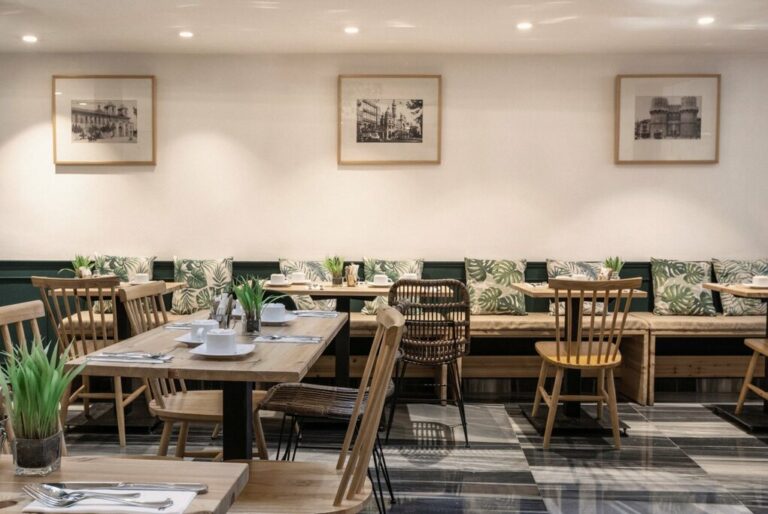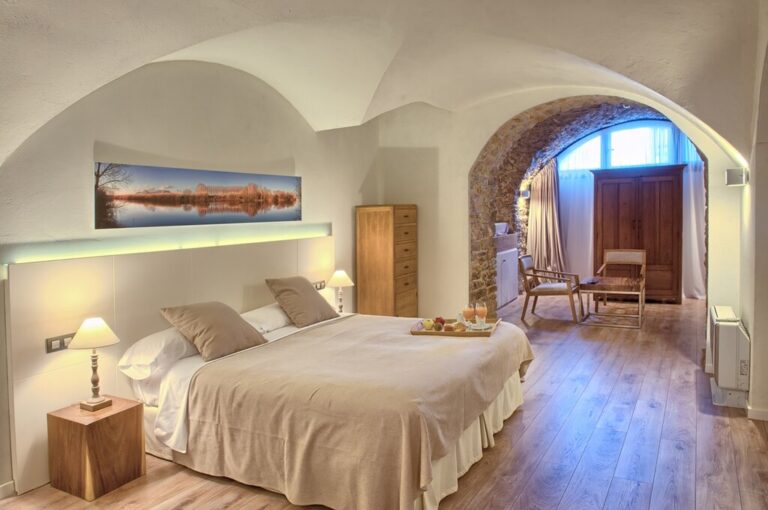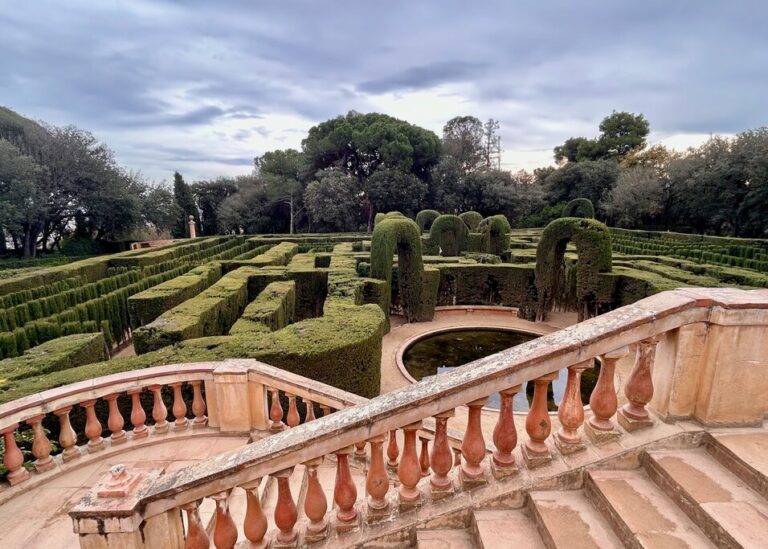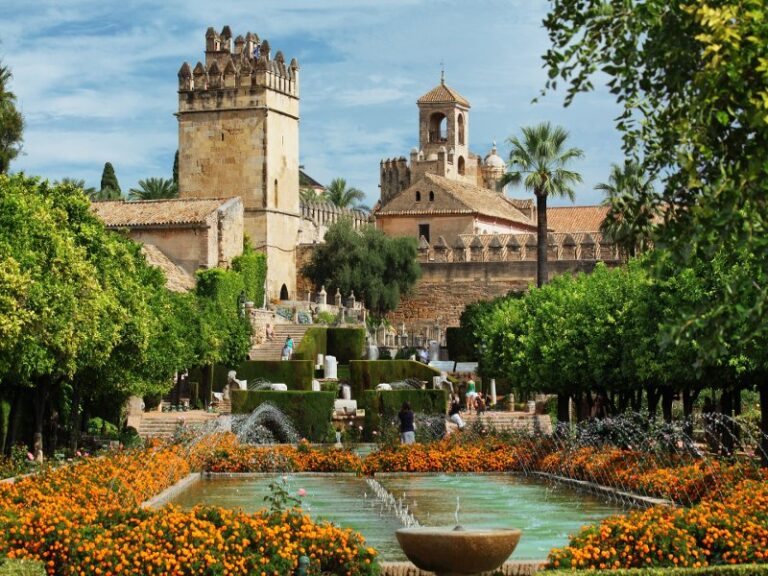Spain North to South: Basque Country to Andalusia – 19 Days
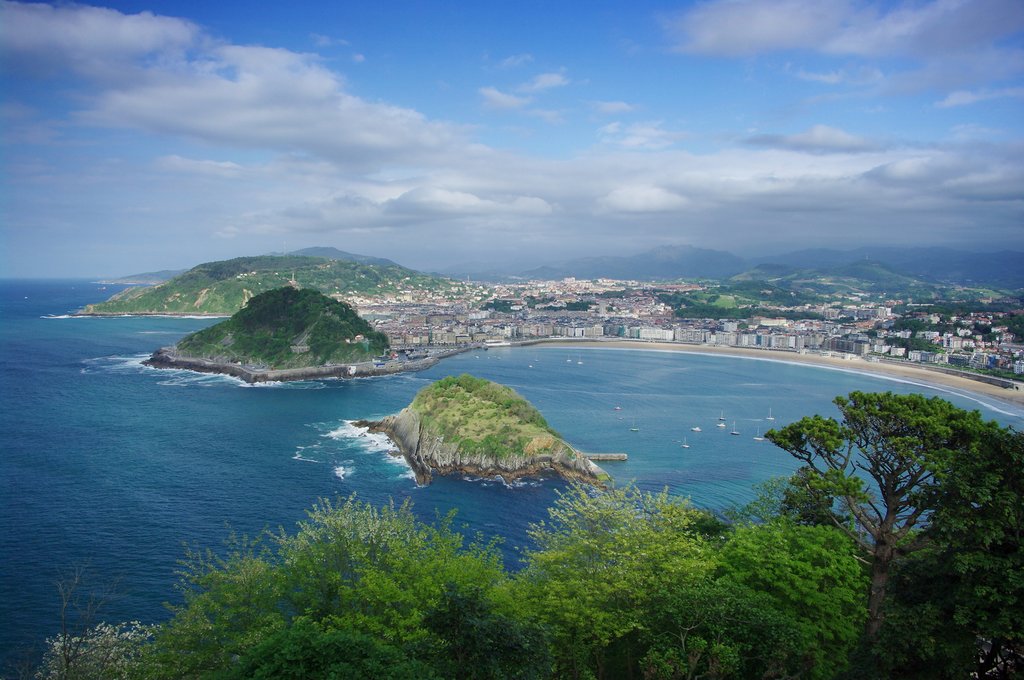
19 days is more than enough time to travel the length and breadth of Spain on a tour of the most remarkable locales in the country. This includes not only the capital of Madrid but the sunkissed metropolis of Barcelona, the Basque Country, and the southern Andalusia region. It’s on this last leg of the journey that you’ll discover some of the country’s most historic landmarks that date back to the time of Moorish rule.
Highlights
- Visit famous landmarks in Barcelona and tour the historic Gothic Quarter
- Explore San Sebastian and try the renowned cuisine of Basque Country
- Take an architecture tour of Madrid and dine at the city’s best restaurants
- Laze on the beaches of Málaga and the Costa del Sol
- Experience the highlights of Andalusia, including Cádiz, Granada, and Seville
Brief Itinerary
| Day | Highlights | Overnight |
|---|---|---|
| Day 1 | Arrival – Exclusive Food Tour of Barcelona | Barcelona |
| Day 2 | Private Tour of Barcelona | Barcelona |
| Day 3 | Free Day in Barcelona or Optional Day Trip | Barcelona |
| Day 4 | Train from Barcelona to San Sebastian – Private City Tour | San Sebastian |
| Day 5 | Getaria Uncovered | San Sebastian |
| Day 6 | Day Trip to Bilbao from San Sebastian | San Sebastian |
| Day 7 | Train from San Sebastian to Madrid – Dinner Out | Madrid |
| Day 8 | Historical and Cultural Tour of Madrid | Madrid |
| Day 9 | Free Day to Explore Madrid or Optional Day Trip | Madrid |
| Day 10 | Train from Madrid to Granada | Granada |
| Day 11 | Private Tour of the Alhambra & Evening Flamenco Show | Granada |
| Day 12 | Private Transfer from Granada to Málaga – Walk the Caminito del Rey | Malaga |
| Day 13 | Free Day to Explore Málaga and Outskirts | Malaga |
| Day 14 | Private Transfer from Málaga to Cádiz – Via Ronda & Grazalema | Cádiz |
| Day 15 | Free Day to Explore Cádiz | Cádiz |
| Day 16 | Train from Cadíz to Seville – Private City Tour | Seville |
| Day 17 | Free Day to Explore Seville | Seville |
| Day 18 | Train from Seville to Madrid – One Last Night in Spain | Madrid |
| Day 19 | Depart Spain from Madrid |
Detailed Itinerary
Day 1: Arrival – Exclusive Food Tour of Barcelona
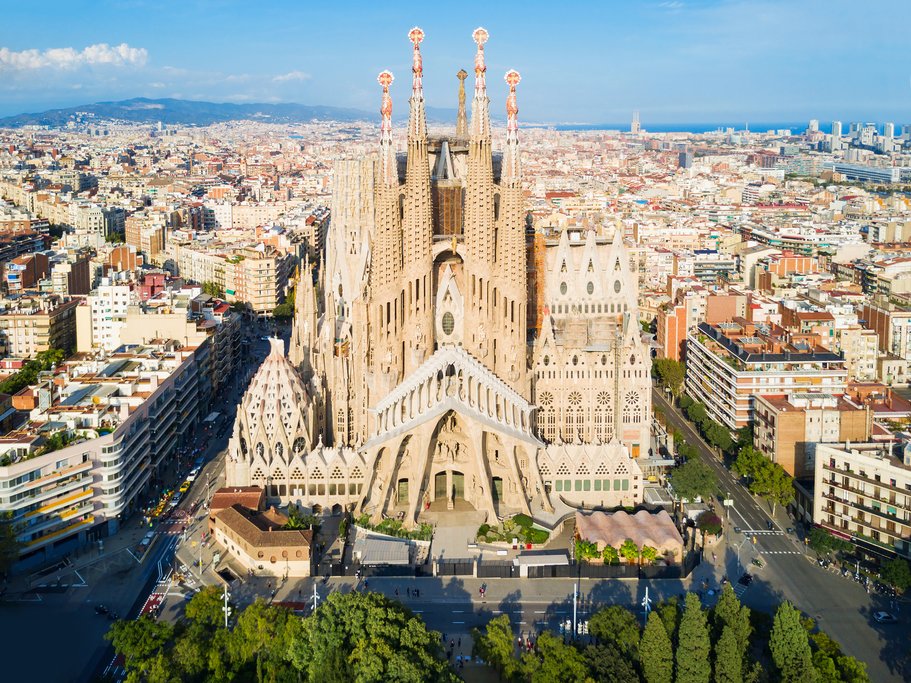
Welcome to Spain!
Upon arrival at Barcelona’s El Prat Airport, a private driver will take you into the city where you can check into your hotel and unwind. You’ll then have the afternoon and evening to explore the cuisine of Barcelona with the help of an expert guide.
The adventure kicks off at an old bodega turned tapas bar, where things have hardly changed since the 1930s. With a glass of the city’s favorite aperitif—sweet vermouth—in hand, you’ll enjoy a tasting of locally cured meats, cheeses, olives, and other Spanish delicacies.
Your foodie excursion continues with a stroll through Barcelona’s stunning Gothic Quarter, during which your guide will point out sights of interest on the narrow medieval streets as they lead the way to the next eatery. This second tapas bar is a staple of Barcelona and a true local haunt. Although it only has a few dishes on the menu, they’re all spectacular.
Afterward, head to another historic neighborhood where your guide will continue to reveal insight into the area’s architecture, history, and culture. Eventually, you’ll arrive at the third and final tapas bar. Pull up a seat, because it’s time to indulge once more in traditional Catalan dishes paired with the region’s globally renowned wine. Delicious must-try tapas include patatas bravas (fried potatoes with aioli), calamari, gambas (prawns), cured ham, croquettes, mussels, chorizo, and much more.
And it wouldn’t be dinner in Barcelona without something sweet to cap the meal. Be sure to save room for a traditional Spanish dessert, like crema Catalona. This sweet custard is made with oranges and cinnamon and is Spain’s answer to the classic creme brûlée.
Day 2: Private Tour of Barcelona
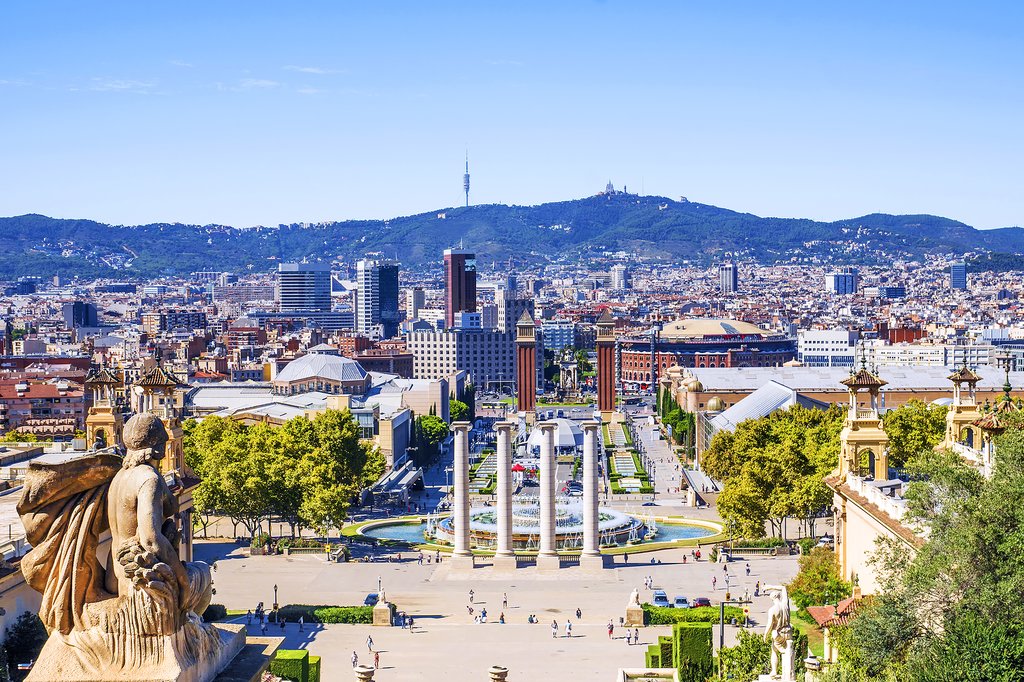
Your day tour of Barcelona begins with a private driver whisking you off to Montjüic, the famous hill overlooking Barcelona’s harbor and which offers panoramic views of the city. Then, after a stop at the Catalunya National Art Museum (MNAC), you’ll visit Plaça Espanya, one of the most important plazas in the city. It’s home to landmarks like the Arenas de Barcelona, a former bullring, and the famous Magic Fountain of Montjüic, whose evening display of light and water is one of the best free shows in town.
Then you’ll drive to the famous boulevard Passeig de Grácia. It’s home to upscale boutiques as well as two buildings by the legendary Spanish architect and master of Catalan Modernism, Antoni Gaudí. The first is the Casa Mila apartment building, which earned the nickname “La Pedrera” because its facade resembles a stone quarry. Casa Batlló is another modernist masterpiece of a residential building. Locals have christened it Casa dels Ossos, or “House of Bones” due to the skeletal nature of its design.
Next up is a stop at the Hospital de Sant Pau, which was built between 1901 and 1930. but was renovated in 2015. Well off the tourist trail, this Art Nouveau building was designed by another Catalan master, Lluís Domènech i Montaner. The hospital has been declared a UNESCO World Heritage Site and is another great symbol of Catalan Modernist architecture in Barcelona.
Finally, you will arrive at the iconic Sagrada Família, the most visually impressive church in Barcelona. This Gothic/Art Nouveau basilica is another brainchild of Gaudí, and although construction began in 1882, it technically remains unfinished to this day. However, that didn’t stop Sagrada Familia from earning UNESCO World Heritage status. It’s a popular tourist draw but you’ll be able to breeze right past the line as your tickets will have been arranged beforehand.
After Sagrada Familia you’ll head to the oldest part of Barcelona, the Barrio Gótico (Gothic Quarter), which as late as the mid-19th century was still surrounded by medieval stone walls. You’ll enjoy a brief stroll through the narrow winding streets before arriving at one of Barcelona’s oldest indoor municipal markets: Mercat de Santa Caterina. inside you’ll find everything from fresh fruits and vegetables to butchers, fishmongers, cured meats, cheeses, flowers, tapas bars, and more.
From the market, the tour becomes a time warp as you pass some of the most historic landmarks in the city. These date from the Roman era through to the early Middle Ages, a time when Catalan counts controlled the Mediterranean and Barcelona was the capital of an empire. Noteworthy sights include the Roman Temple of Augustus, the Royal Palace, the Jewish Quarter, and the Barcelona Cathedral.
At last, you’ll arrive in the trendy district of El Born, which is located near the waterfront and is home to the famed Picasso Museum. Your guide will point out a variety of restaurants and tapas bars perfect for a quick meal before arriving at the final destination of the tour: the 14th-century Basilica de Santa Maria del Mar, a magnificent example of Catalan-Gothic architecture.
Day 3: Free Day in Barcelona or Optional Day Trip
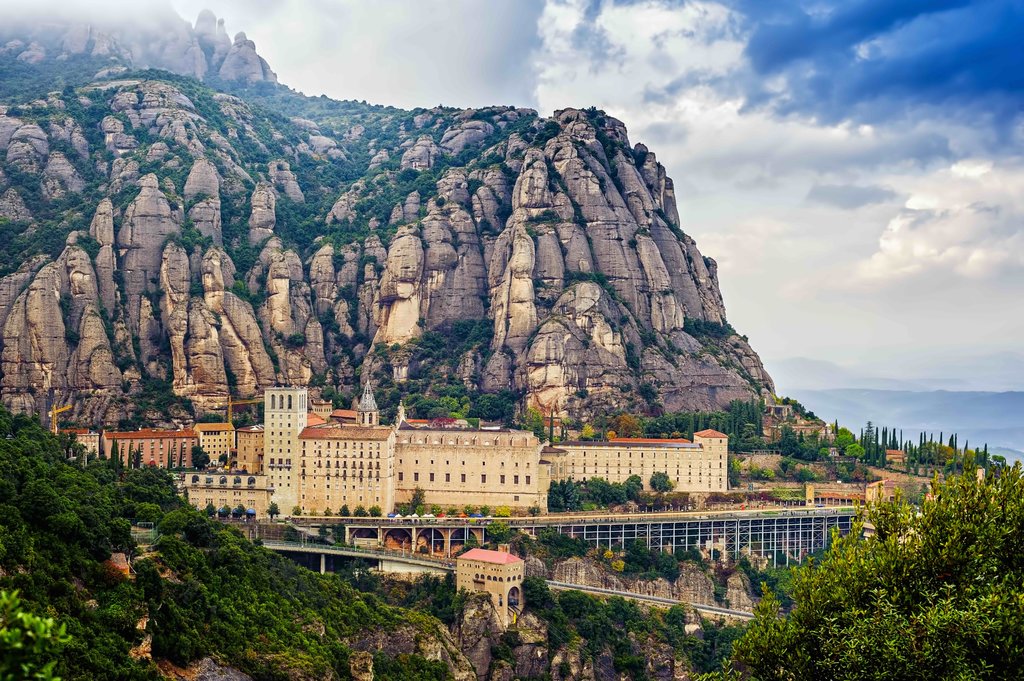
Today you can explore Barcelona on your own, or you can opt for one of several day trips from the city. We recommend a day trip, as it will reveal glimpses of Catalan life beyond the metropolis. Outside the city’s borders lie a wonderland of rugged mountains, golden beaches, and pretty, sleepy little towns, all just a short drive away.
One option is to travel about an hour northeast from Barcelona to Girona. This historic city lies next to the Onyar River and is known for its cobbled streets, grand churches, and medieval Old Quarter hemmed in by stone walls. You can walk these ancient ramparts, and they afford great elevated views of the city.
Girona is also home to a well-preserved Jewish quarter, which lasted for 500 years until the expulsion of the Jews in 1492. The fascinating Museu d’Història dels Jueus de Girona recounts this story. There’s also the 12th-century Banys Àrabs, which are the remnants of Arab baths from the days when Moors ruled the land. Another landmark is the Sant Pere de Galligants, a Romanesque Benedictine abbey dating from the 12th century and is now home to the Archaeology Museum of Catalonia in Girona.
Located north of Girona is the town of Figueres, the birthplace of Salvador Dalí. There’s some handsome Modernista architecture here and the 18th-century military fortress of Sant Ferran Castle. Still, Figueres is best known for the Teatre-Museu Dalí. A former theatre, it was converted by Dalí himself into a labyrinth of surrealism displaying the largest collection of his works, including many from his personal collection. This is also Dali’s final resting place, as his corpse is buried in a crypt beneath the stage.
You can also travel up the Montserrat Mountains to Catalonia’s holiest site, the 16th-century Benedictine monastery of Santa Maria de Montserrat. Located 28 miles (45 km) northeast of Barcelona at an altitude of 4,055 feet (1,266 meters), the views from the church are spectacular. Inside, above the altar, is a statue of the Virgin of Montserrat, the patron saint of Barcelona. You can reach the monastery on a 1.5-hour hike from the town of Monistrol de Montserrat or simply take a five-minute cable-car.
The pretty coastal town of Sitges, located about 45 minutes southwest of Barcelona, makes for a perfect day trip. The pace is decidedly more laidback here, and some of the best activities are the simplest, like strolling the long waterfront promenade or sunbathing on one of the many beaches in and around town. Ideal activities in town include dining in one of Sitges’ world-class seafood restaurants or visiting one of its fine museums and art galleries.
Day 4: Train from Barcelona to San Sebastian – Private City Tour
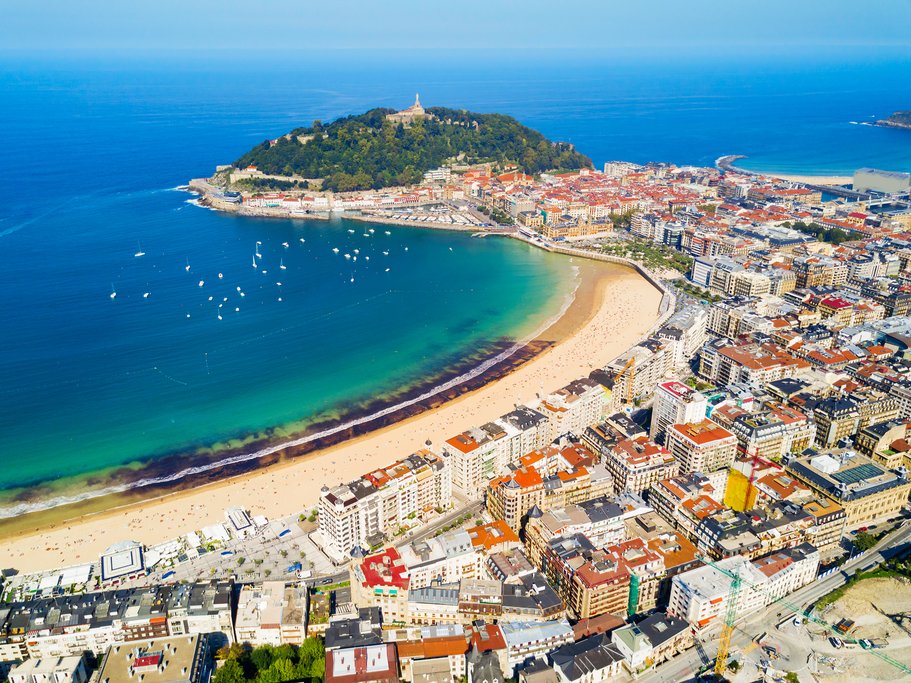
After breakfast, you’ll transfer to Barcelona’s train station where you’ll embark on a five-hour railway journey. The destination is the northern Atlantic coast and the city of San Sebastian, which sits on the Bay of Biscay near the border with France. It’s located in the heart of Basque Country, one of Spain’s most beautiful regions and a haven for foodies across the globe.
After checking into your hotel, you’ll explore San Sebastian with a local guide. You’ll wander the stone streets of the Parte Vieja (“Old Quarter”) and stroll along La Concha Promenade, the elevated waterfront that curves around the city’s main beaches, Onderreta and La Concha. For great views looking back at San Sebastian, take a ferry to the famous offshore island of Santa Clara, or ride a funicular railway up to Mont Igualdo, which offers even more sweeping panoramas from the west edge of the city.
Of course, no tour of San Sebastian is complete without indulging in its celebrated food culture. San Sebastian specializes in a type of tapas called pintxos (pronounced “peenchos”). Most bars, cafés, and restaurants in the Parte Vieja serve some version of these bite-sized, gourmet delicacies, and naturally, they’re best paired with some delicious local wines. Here it’s possible (and indeed encouraged), to hop from pintxos bar to pintxos bar, grazing until your heart’s content.
Day 5: Getaria Uncovered
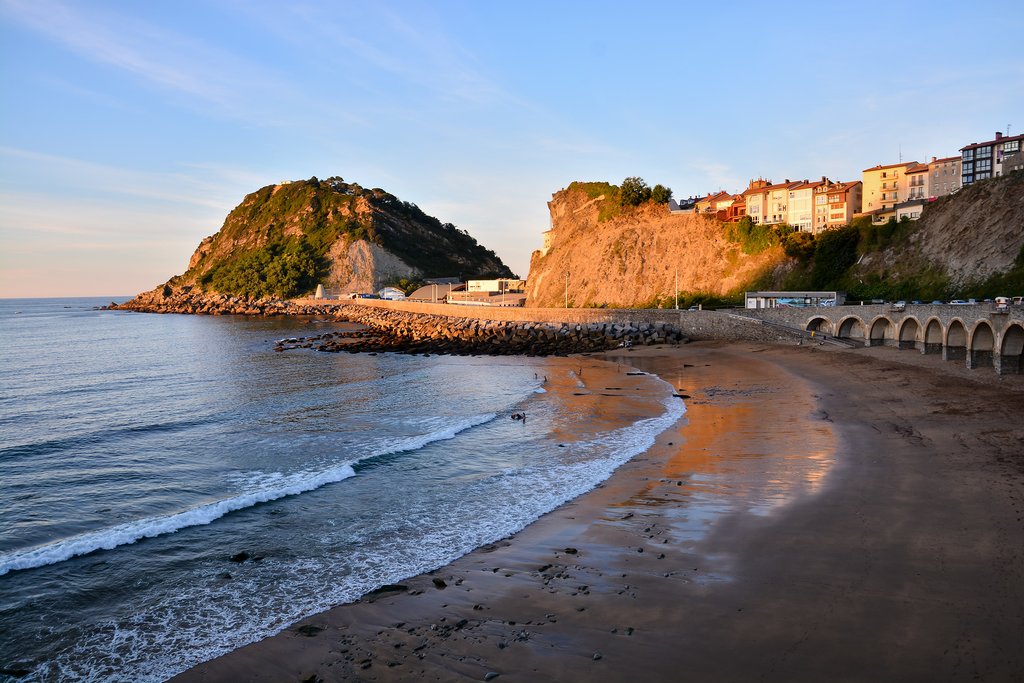
A half-hour down the coast from San Sebastián is a beautiful village rich in food culture and history. Its name is Getaria, and after breakfast you’ll transfer here and join our local foodie guide. He or she will lead you on an exploration of this town, which is deservedly famous for winemaking and delicious seafood.
The tour begins with a stroll along Getaria’s cobbled streets until you arrive at the main port. This is one of the most popular entry points in Basque Country for fresh tuna and shiny Cantabrian anchovies. You’ll glean insight into the area’s rich fishing culture by meeting and chatting with various artisans who work on the waterfront hand-packing fish.
Afterward, you’ll head off to a local bodega for a unique tasting of various seafood dishes that celebrate Basque flavors. Paired with this delectable cuisine will be the region’s famed txakoli wine. As you drink, your guide will explain the origins and characteristics of this carbonated, dry white wine, which is firmly rooted in Getarria’s terroir.
You’ll then travel around the region’s countryside as your guide reveals more insight into the roots of Basque cuisine. Capping the day will be a stop in the postcard surfer village of Zarautz, where you’ll take a mini-tour of the local food scene, indulging in more pintxos and toasting new friends with glass after glass of regional wine.
Day 6: Day Trip to Bilbao from San Sebastian
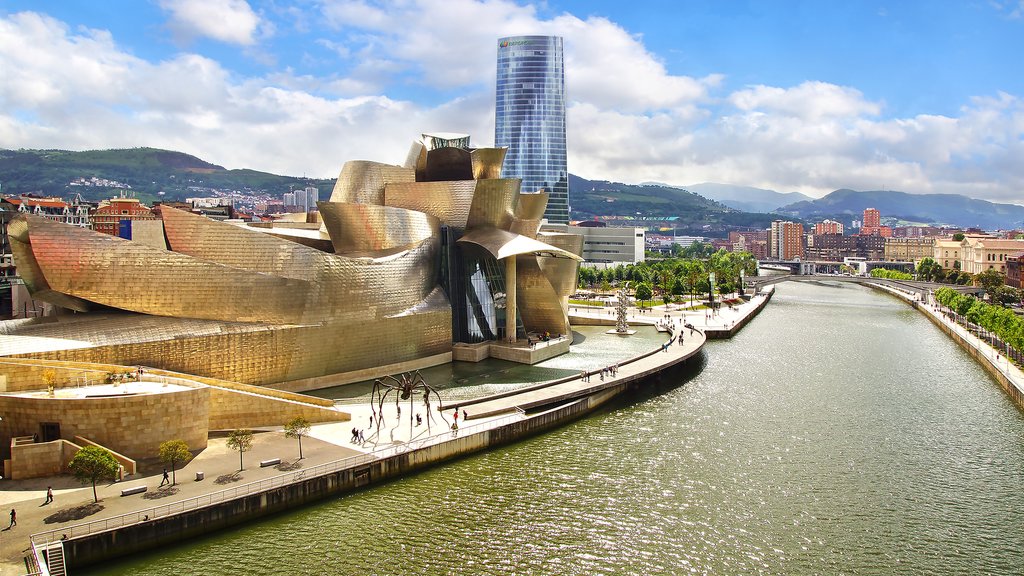
After breakfast, your private driver will transfer you about an hour west to the coastal city of Bilbao, an often-overlooked gem of the region. Staggeringly innovative architecture, a venerable dining scene, and fertile green mountains just outside the city center combine to make Bilbao one of the great treasures of Basque Country.
You can explore Bilbao on a self-guided tour, perhaps starting in Casco Viejo (the historic center). You can visit the 14th-century Santiago Cathedral, walk along the Nervión River, and stop at the Mercado de la Ribera, a municipal market filled with fresh produce, cured meats and cheeses, fishmongers, butchers, and plenty of pintxos bars. You could also hop in a funicular elevator for the three-minute ride up 2,700 feet (812 meters) to the top of Mt. Artxanda, which features the best views of the city.
You definitely won’t want to miss the Museo Guggenheim Bilbao, a masterpiece of contemporary architecture by the legendary Frank Gehry. This glimmering titanium structure looks more like a sculpture than a building, with its sleek lines sensually curving in seeming defiance of physics. Inside, the museum’s 24,000 square-meter space houses a treasure trove of works from great artists such as Andy Warhol, Anish Kapoor, Jeff Koons, Louise Bourgeois, and Eduardo Chillida.
But the Guggenheim isn’t the only architectural marvel in the city. Other must-see examples include the Zubizuri, a soaring bridge designed by Santiago Calatrava, and the Azkuna Zentroa, a wine storage warehouse turned imaginative cultural center done by Philippe Starck. The city also has its share of beauties from the past, including a neo-baroque theatre, an art nouveau train station, and several spectacular cathedrals.
When lunch and dinnertime roll around, you’ll definitely want to indulge in some local fare. The dining scene in Bilbao staggers the imagination. Here you’ll find Michelin-starred eateries, buzzing pintxo bars, and family-run restaurants each offering a unique take on Basque cuisine. Beyond the Mercado de la Ribera, you can explore the cobbled streets of the historic center, which offers endless rewards for foodies.
Day 7: Train from San Sebastian to Madrid – Dinner Out
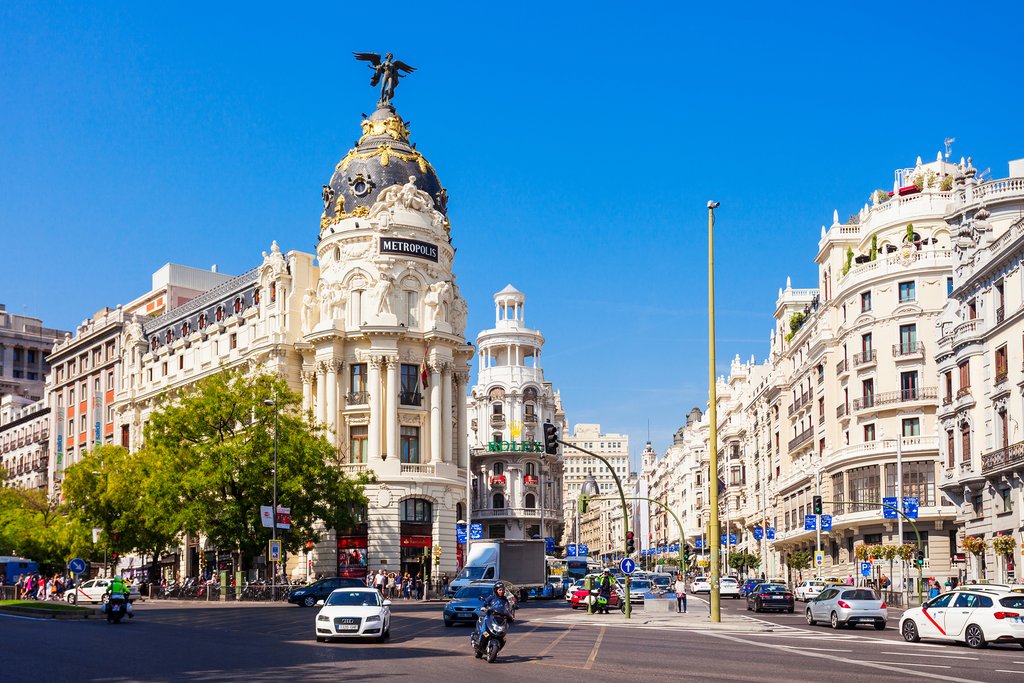
After breakfast, you’ll transfer to the train station for a 2.5-hour journey south to Madrid. From here you’ll hop in a taxi for the drive to your hotel. After checking in you’ll have the rest of the day free to enjoy however you wish. Even if you’re tired from your journey you should still head out in the evening for an unforgettable dinner.
Madrid is a melting pot of all different types of cuisine. Your choices for restaurants here are as varies as your taste in food. To sample as much food as possible, head to the Mercado San Miguel, an indoor municipal market located in the center of the city at Plaza de San Miguel. It’s over 100 years old and features over 20 food stalls selling everything from fresh fish and shellfish from Galicia, Iberian ham, artisanal cheeses, rice dishes, tapas, and more.
When night falls, be sure to indulge in Madrid’s diverse and world-class culinary scene. If you want to dine amid history, head to the city center and Botín, which is listed in the Guinness Book of World Records as the oldest restaurant in the world. It first opened its doors in 1725 and has been doing a mean roast suckling pig ever since. No less than Ernest Hemingway described it in his seminal 1926 novel, “The Sun Also Rises,” as the best restaurant on earth.
Chat with a local specialist who can help organize your trip.
Day 8: Historical and Cultural Tour of Madrid
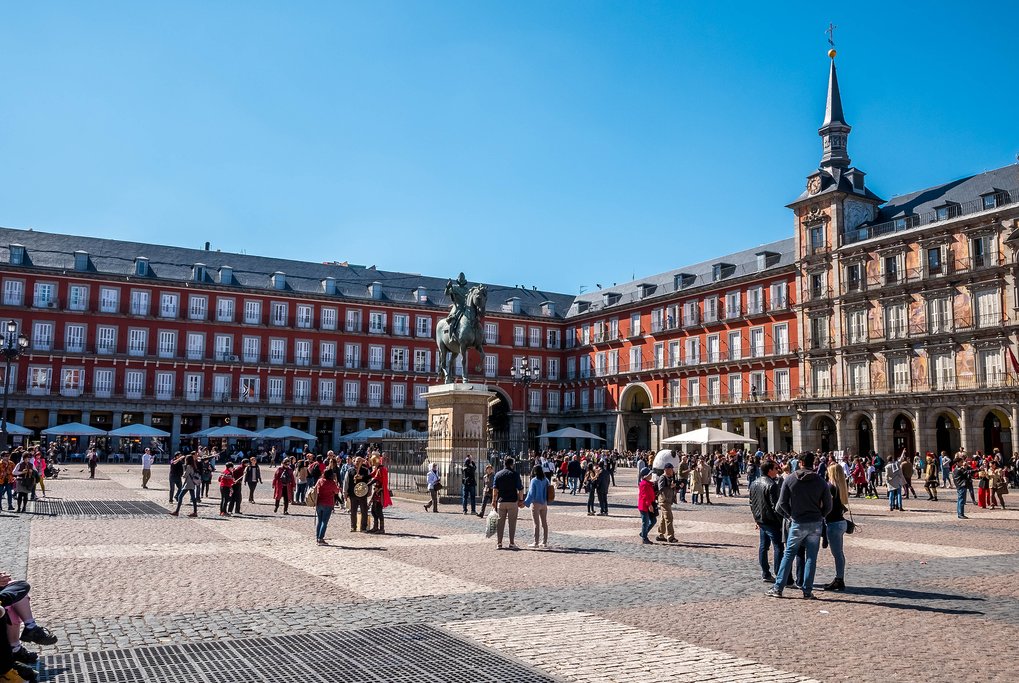
Today, you’ll discover the city of Madrid and explore its cultural highlights with the help of an expert guide. On this enlightening walking tour, the guide will recount the history of the city and its development from a medieval seat of Spanish power to a modern metropolis of international renown. You’ll also learn about current social and cultural events to ensure you’re up to date on what’s happening in 21st century Madrid.
After you’ve experienced a bit of the city, the guide with leave you at a great local restaurant for lunch. You’ll then have the rest of the day to explore on your own. You should definitely visit the expansive plazas in the heart of the city, such as the Plaza Mayor and the Puerta del Sol, which date back to the 15th and 14th centuries, respectively, and embody classic icons of Old Madrid.
Madrid is also home to can’t-miss museums like the Prado Museum, which boasts one of the finest collections of European art spanning the 12th through the 20th century and featuring the works of masters like Goya, Bosch, El Greco, Titian, and Diego Velázquez, among others. There’s also the Museo Nacional Centro de Arte Reina Sofía, Spain’s national museum of 20th-century art and contains works by masters such as Picasso and Salvador Dalí.
After a bit of culture, you might consider visiting El Retiro Park. This 308-acre space is the green lung of Madrid, abounding with sculptures, fountains, a man-made lake, and a 400-year-old Mexican conifer which is regarded as the oldest tree in Madrid. There are also must-visit gardens here including the Jardín de Vivaces (“Garden of Vivacious Plants”), Jardines de Cecilio Rodríguez (inspired by the Andalusia region), and a garden home to over 4,000 roses (best to see these blooms from May through June).
Day 9: Free Day to Explore Madrid or Optional Day Trip
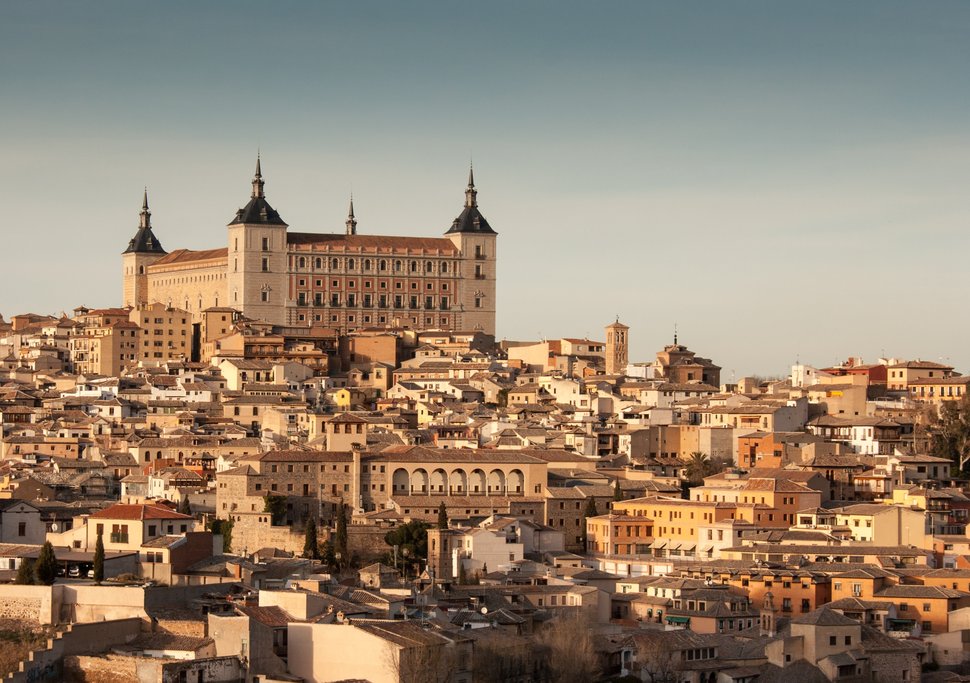
Today you can further explore Madrid on your own or opt for a day trip to various locales all within an hour or so of the city.
A great option is Toledo. Dramatically situated atop a gorge overlooking the Río Tajo, in the Middle Ages it was known as the “city of three cultures.” This is where—legend has it—Christian, Muslim, and Jewish communities peacefully coexisted. Remnants of Toledo’s Arab, Muslim, and Christian monuments include the 15th-century Monastery of San Juan de los Reyes, the former Roman palace Alcázar de Toledo, and the Moorish Synagogue of Santa María la Blanca, which dates to the 12th century.
Another option is the Unesco World Heritage Site of Segovia, known for the enormous Aqueduct of Segovia that runs through the city’s midtown. Nowhere else in Spain will you find such a stunning monument to Roman grandeur. Other incredible landmarks include its gothic Catedral de Segovia and the nearby Royal Palace of La Granja of San Ildefonso, which dates to the 18th century and was a former summer residence of the monarchs of Spain.
For a fortress experience, visit Ávila. This fortified city is nestled in the rolling green hills northwest of Madrid and is also a UNESCO Site. Encircling it are imposing city walls featuring eight monumental gates, 88 watchtowers, and more than 2,500 turrets, making it one of the best-preserved medieval bastions in Spain. It’s a deeply pious city, which makes sense considering that there are supposedly more gothic and romanesque churches per capita here than there are in the whole of Spain.
Then there’s Salamanca, a city of rare beauty that wears its historical legacy on its sleeve. It abounds with golden sandstone architecture overlaid with ochre-tinted Latin inscriptions, plus more gothic/baroque plazas and palaces than you can shake a stick at. One highlight is the Plaza Mayor, which is gorgeous after dark when the lights go on. Despite dating back to Celtic times, the spirit here is modern and youthful, which is due to the large student population enrolled in the Universidad de Salamanca.
Day 10: Train from Madrid to Granada
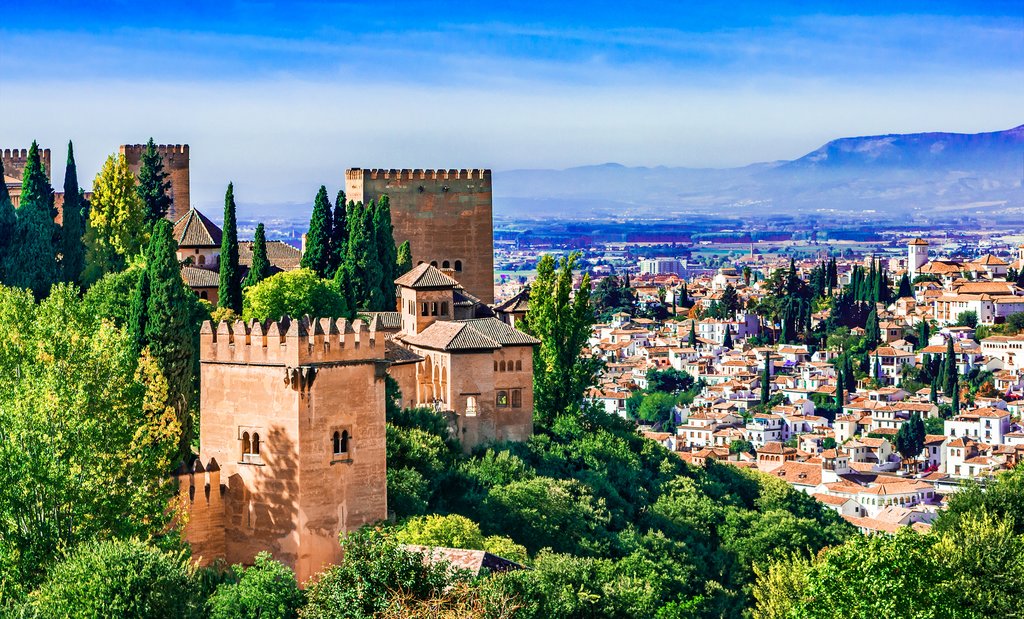
After breakfast, you’ll transfer to the train station for your journey three hours south to the Sierra Nevada Mountains and the city of Granada. Located in Spain’s southern autonomous community of Andalusia, Granada is one of the most historic and beautiful cities in the south. Upon arrival, you’ll check into your hotel and have some time to relax and unwind.
In the late afternoon, you’ll meet a guide for a city tour of Granada by bike. Or if you prefer a slower pace, you can opt for a walking tour instead. You’ll visit all the major sites, including the Plaza Nueva (the oldest square in the city), the Albaicín (the medieval/Moorish historic center), Barrio Realejo (the historic Jewish Quarter) and the 16th century Catedral de Granada, the largest and most opulent Roman Catholic church in the city.
End the day at a local eatery where you’ll enjoy some traditional tapas and adult refreshment. Bring your appetite—Granada is known for its huge portion sizes.
Day 11: Private Tour of the Alhambra & Evening Flamenco Show
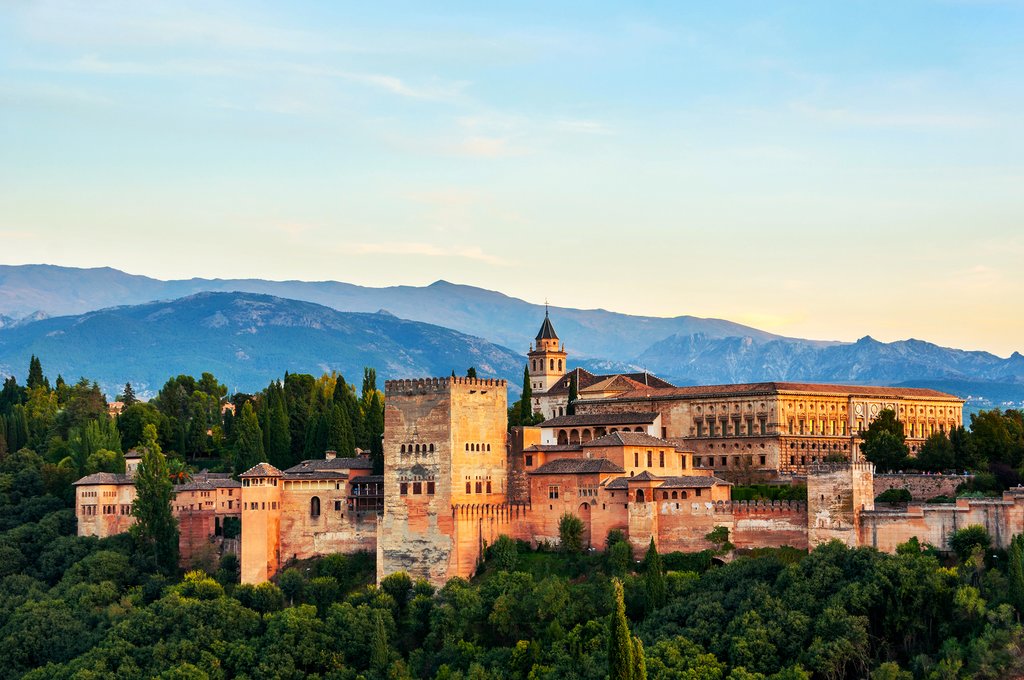
After breakfast, you’ll visit the Alhambra, the most iconic landmark in Granada and one that many call the eighth wonder of the world. This famous palace/fortress complex was constructed in the 9th century and was home to rulers of the Moorish/Muslim Nasrid Dynasty as well as the Royal Court of King Ferdinand and Queen Isabella.
With countless rooms and the charming Generalife Gardens, which are filled with colorful flowers and fountains, this mountaintop fortress makes for an unforgettable visit. You can opt for a private visit or a guided group tour.
After the tour, You’ll have the rest of the day to explore Granada on your own. In the evening, you’ll enjoy dinner and a flamenco show. The Andalusia region is the birthplace of this evocative and romantic dance, so expect to be wowed.
Day 12: Private Transfer from Granada to Málaga – Walk the Caminito del Rey
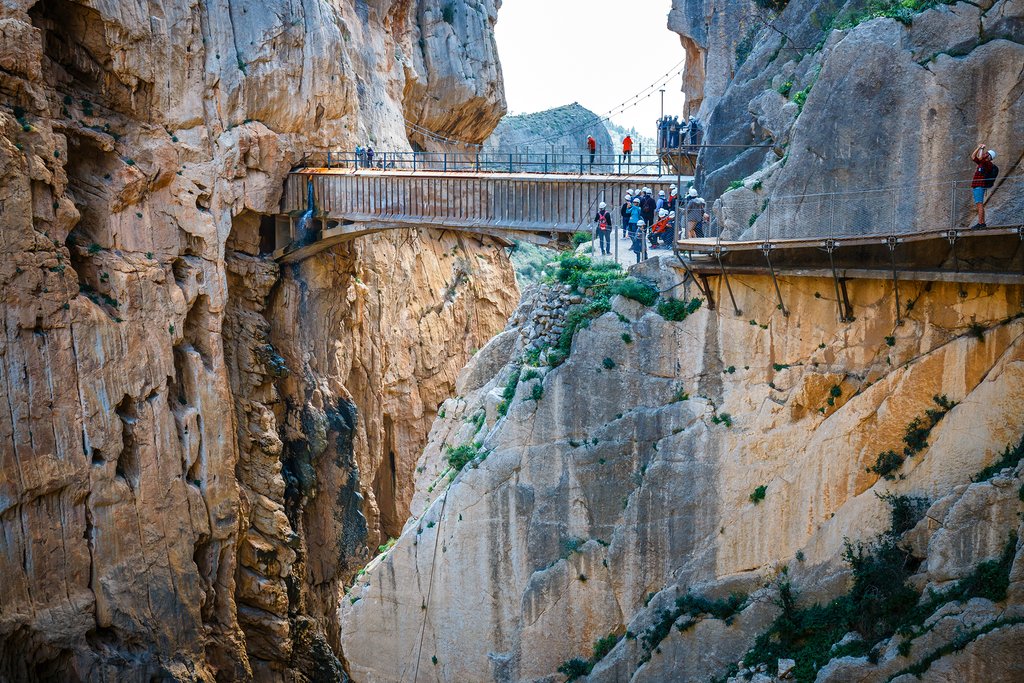
After breakfast, your driver will pick you up for a private, one-hour transfer to Málaga. En route, you’ll stop near the village of Antequera to walk the Caminito del Rey. This “King’s Path” walkway is so named because Alfonso XIII crossed it for the inauguration of the Conde del Guadalhorce hydroelectric dam in 1921. Consisting of a mile-long (3 km) boardwalk suspended on the cliffs 328 feet (100 meters) above the Río Guadalhorce, the Caminito del Rey affords breathtaking views at every turn.
The Caminito had fallen into disrepair by the late 1990s and was officially closed in 2000. Following an extensive and costly restoration, it reopened in March 2015. It’s now perfectly safe and open for business, but the sheer height of the walkway still offers all the scares and thrills it ever did. Know that the walk can only be done in one direction (north-south), and you should allow about four hours for this 4.7-mile (8 km) hike, as you’ll want to savor the views.
After the walk, you’ll hop back in the car and continue the drive south about 45 minutes to Málaga. Upon arrival, you’ll check into your hotel and will have the evening free to relax.
Day 13: Free Day to Explore Málaga and Outskirts
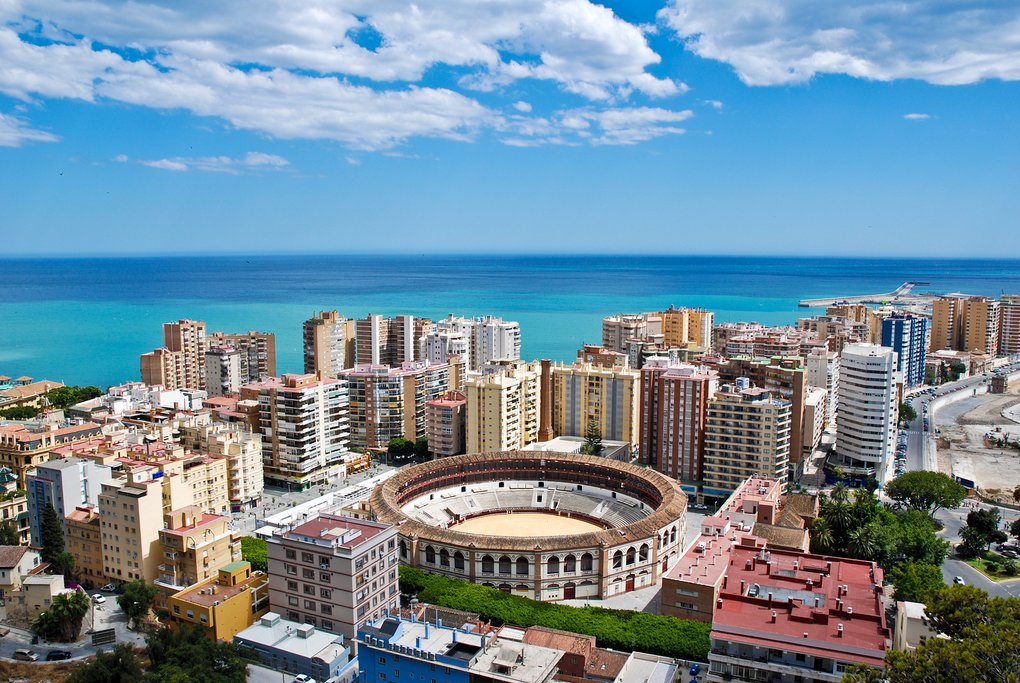
Today you’ll explore one of the crown jewels of Spain’s Andalusia region, the coastal city of Málaga. Located at the top of the Costa del Sol, this ancient metropolis has more culture and history than many of the resort towns further south on Spain’s famous riviera. Málaga dates back a whopping 3,000 years to Phoenecian times, and it just so happens to be the city that produced Picasso.
After a hearty breakfast, you’ll take to the streets for an up-close-and-personal discovery of Málaga’s culture and history. You’ll be free of rigid schedules, allowing you to explore whenever and however you choose. Perhaps you can also head to the outskirts of the city to visit some of the area’s lesser-visited towns and beaches.
Within the city limits are a number of highlights. Don’t miss the Alcazaba, an Islamic fortress that dates to the 11th century when the region was ruled by the Moors. Sitting on a hillside in the city center and looking out over the port, it consists of two walled enclosures comprised of 110 towers. It’s a marvel of ancient military design, and you can stroll its ramparts and gardens while taking photos.
Other sights include the remodeled Port of Málaga (perfect for a waterfront stroll), and the 16th-century Málaga Cathedral, which features 131-foot ceilings, 15 chapels, and church organs with more than 4,000 pipes. As for culture, you can visit a number of museums such as the Pompidou Centre, which displays works by Frida Kahlo and Francis Bacon, among others. Of course the most famous is the Picasso Museum, which houses 200 works by the master of cubism and Málaga’s favorite son.
If the weather’s right you can laze on Málaga’s golden La Malagueta Beach, located in the neighborhood of the same name in the city center. To get away from the crowds you can head about an hour east of the city by train to the fishing village of Nerja. Known for its coastal cliffs and beautiful beaches, the town is just as famous for the Caves of Nerja, a series of caverns that stretch 5 miles (3 km), and not only feature hanging stalactites and columns, but also a theater that holds regular concerts.
Whatever you do, be sure to stop in at a tapas bar in Málaga for lunch or dinner. The tapas culture here is just as strong as it is anywhere else in Andalusia, and some of the best spots indulge in these small plates include La Deriva, La Farola de Orellana, Lo Güeno Mesón, Matahambre, and Mesón Ibérico.
Day 14: Private Transfer from Málaga to Cádiz – Via Ronda & Grazalema
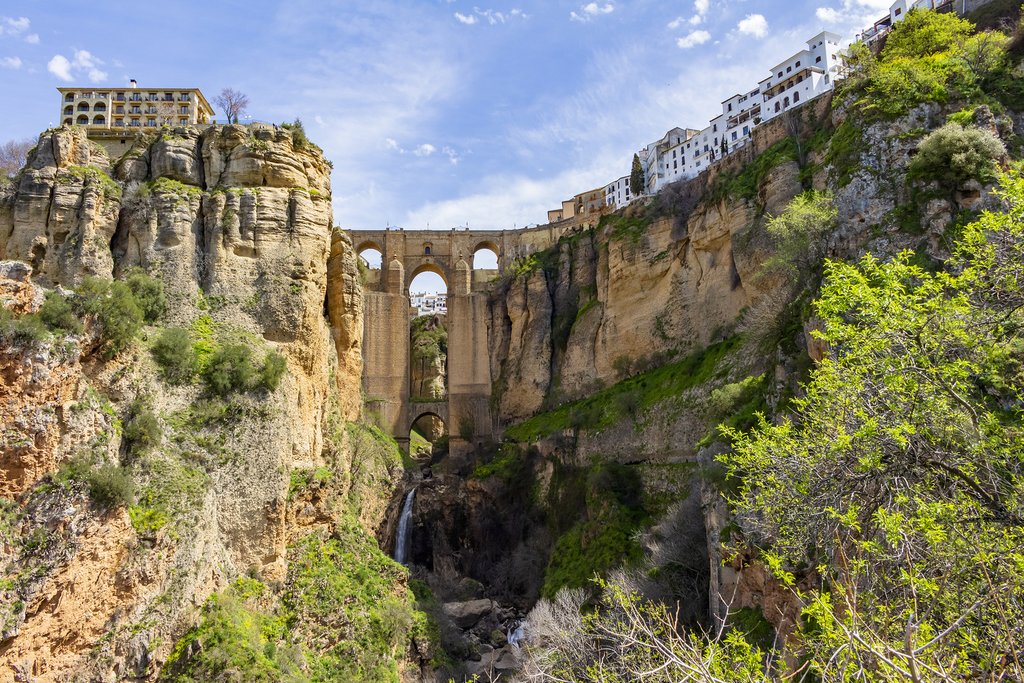
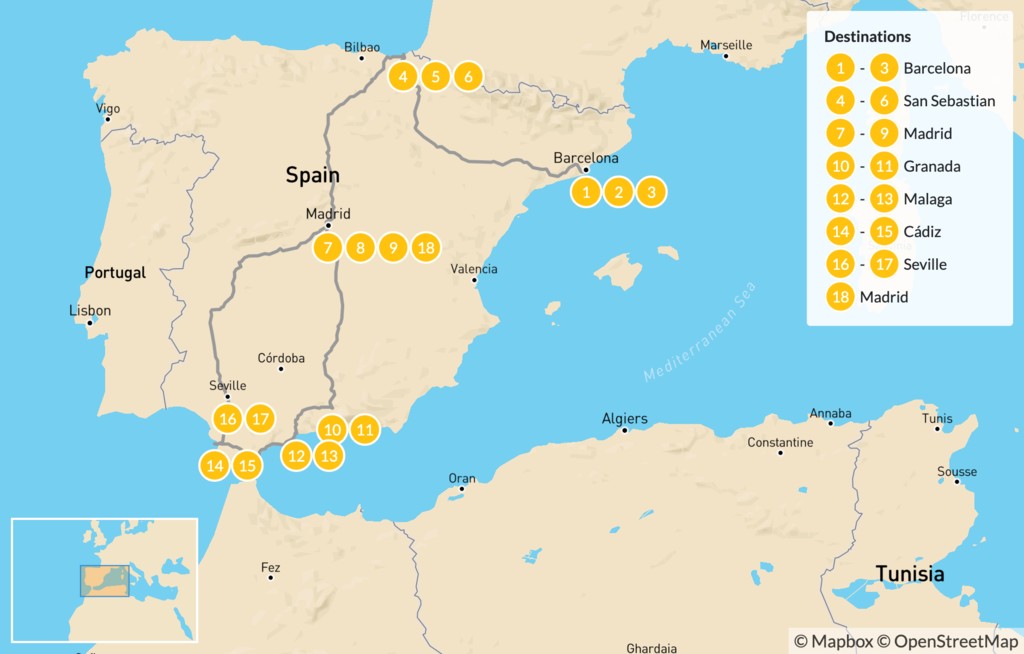
Map of Spain North to South: Basque Country to Andalusia – 19 Days
T8156
Tours & Itineraries
Get inspired by trips other travelers have loved
Family Trip to Spain: Barcelona & Madrid – 8 Days
Spain North to South: Basque Country to Andalusia – 17 Days
Taste of Northern Spain – 9 Days
Luxury Northern Spain Road Trip: La Rioja & Basque Country – 7 Days
Family Adventure in Southern Spain: Málaga, Granada, Seville & More – 10 Days
Family Trip to Spain: Barcelona & Madrid – 7 Days
Hotel Advice
Unique places to stay, curated by Big Time Holiday specialists
Atzaró Agroturismo Hotel, Ibiza Hotels
Petit Palace Plaza de la Reina Hotel, Valencia Hotels
Hotel El Petit Convent, Begur Hotels
Best Experiences
Unique things to do, curated by Big Time Holiday specialists

